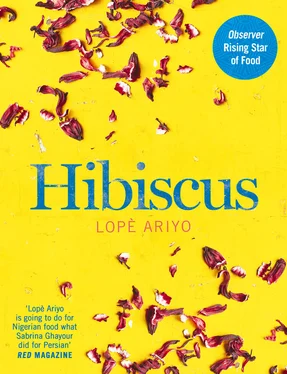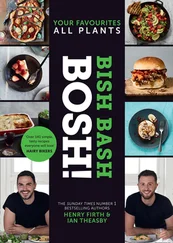For me, British and Nigerian influences are equally important – I like to merge the best aspects of both. I love the combinations of ingredients (especially the spices) used in Nigeria and West Africa, whereas British or European cooking tends to offer more time-effective methods. I am passionate about West African food because it promotes the use of fresh, natural ingredients and the emphasis is on taking care of your body without overthinking things. Our food is all about caring and hospitality – bringing people closer together and making people feel happy. Behind each dish, there is a story to share.
Globalization and multiculturalism are doing much to promote West African food and culture in the UK. However, there aren’t many high-profile figures who champion West African food in this country, so I want to share my culture and inspire other British Africans to tell their stories through food. I think representation matters, so if someone can see a little bit of themselves in me, I hope they’re encouraged to pursue their own ideas and express themselves through what they cook as I have done. More than ever before, African foods are readily available in supermarkets and online. Despite this, they’re not bought as much as they might be because there’s little understanding of how to use these ingredients. I’ve witnessed people trying West African food and I’ve seen the intrigue it sparks on their taste buds – they want to know about the flavours and how to make it. There are a growing number of cafés and restaurants serving West African food, but recreating these dishes at home is still out of reach for many.
Hibiscus is my first cookbook and I hope to show you a glimpse of what West African-inspired food has to offer. From over 200 of the ethnic groups in Nigeria, I’ve primarily focused on the cuisine of three: Yoruba, Igbo and Hausa. My aim is to create fresh, flavourful meals for every occasion. There are ingredients that you may never have come across (although I’ll always try to provide an alternative where possible) and new cooking methods and techniques to try, too. You’ll also find British classics with a Nigerian twist and rejuvenated recipes for everyday staples that make use of underappreciated flavour combinations. I hope these recipes can transform your cooking into something spectacular, the way they have mine.
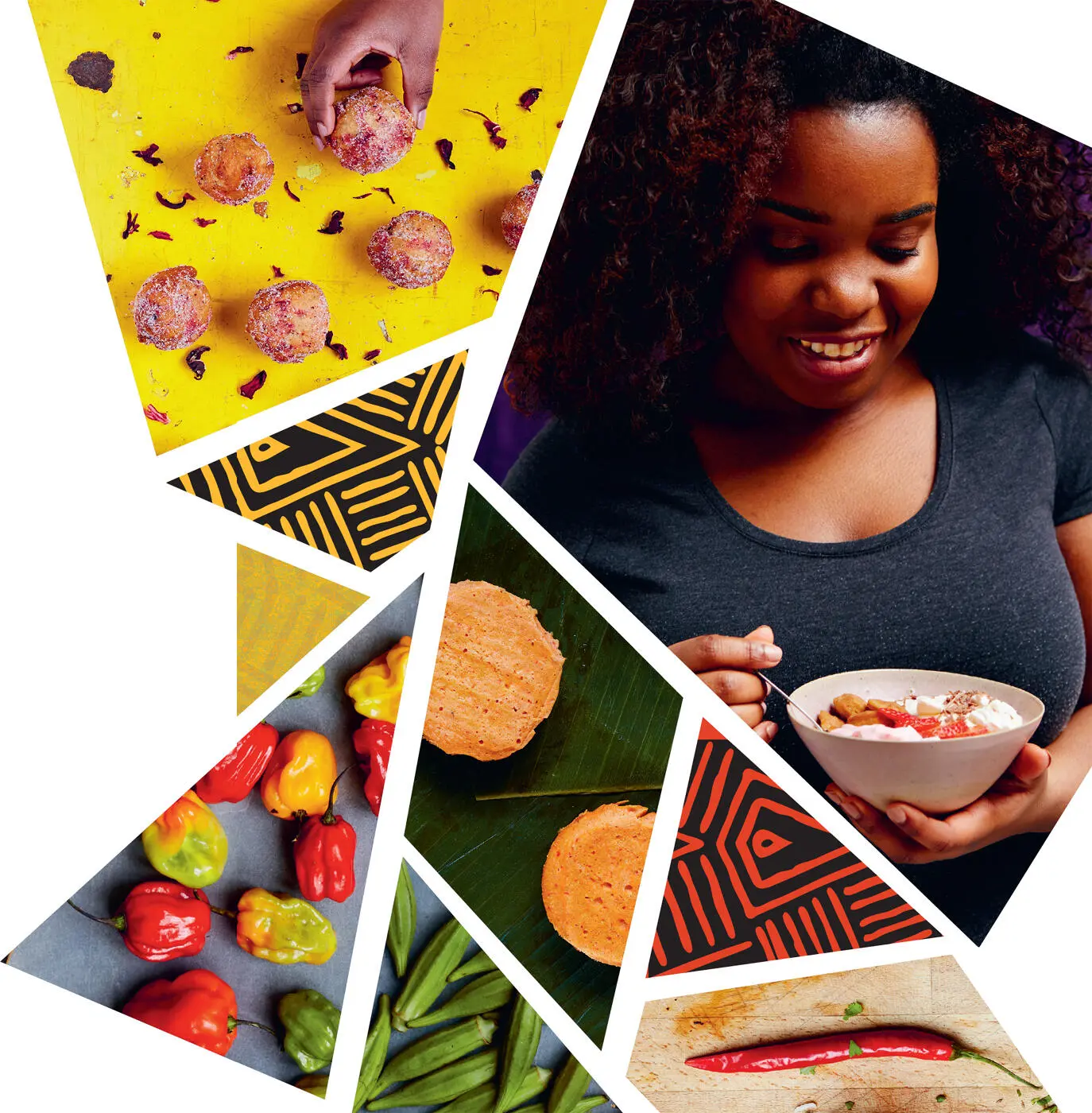
MY STORE CUPBOARD
It’s much easier to find ingredients that are used in Nigeria in Western supermarkets nowadays, especially if you live in a city. I must confess that I am a big online food shopper – a habit (or skill, in my opinion!) I picked up at university. So, if you struggle to find anything that features in the book, do have a browse online. Many of the ingredients used in Nigerian cuisine can also be found in health-food stores, as they’re considered superfoods here.
In Hibiscus, you’ll find a few exotic ingredients that you may never before have associated with Nigeria. I’m hoping (and happy!) to introduce you to some new ingredients, too. I love to experiment with novel flavours and find it incredibly rewarding, particularly when I serve something and an inquisitive look comes across everyone’s face – tasting something they’ve never experienced, something they can’t quite put their finger on. Below are my go-to ingredients and I’ve provided a description of the slightly more unusual ones.
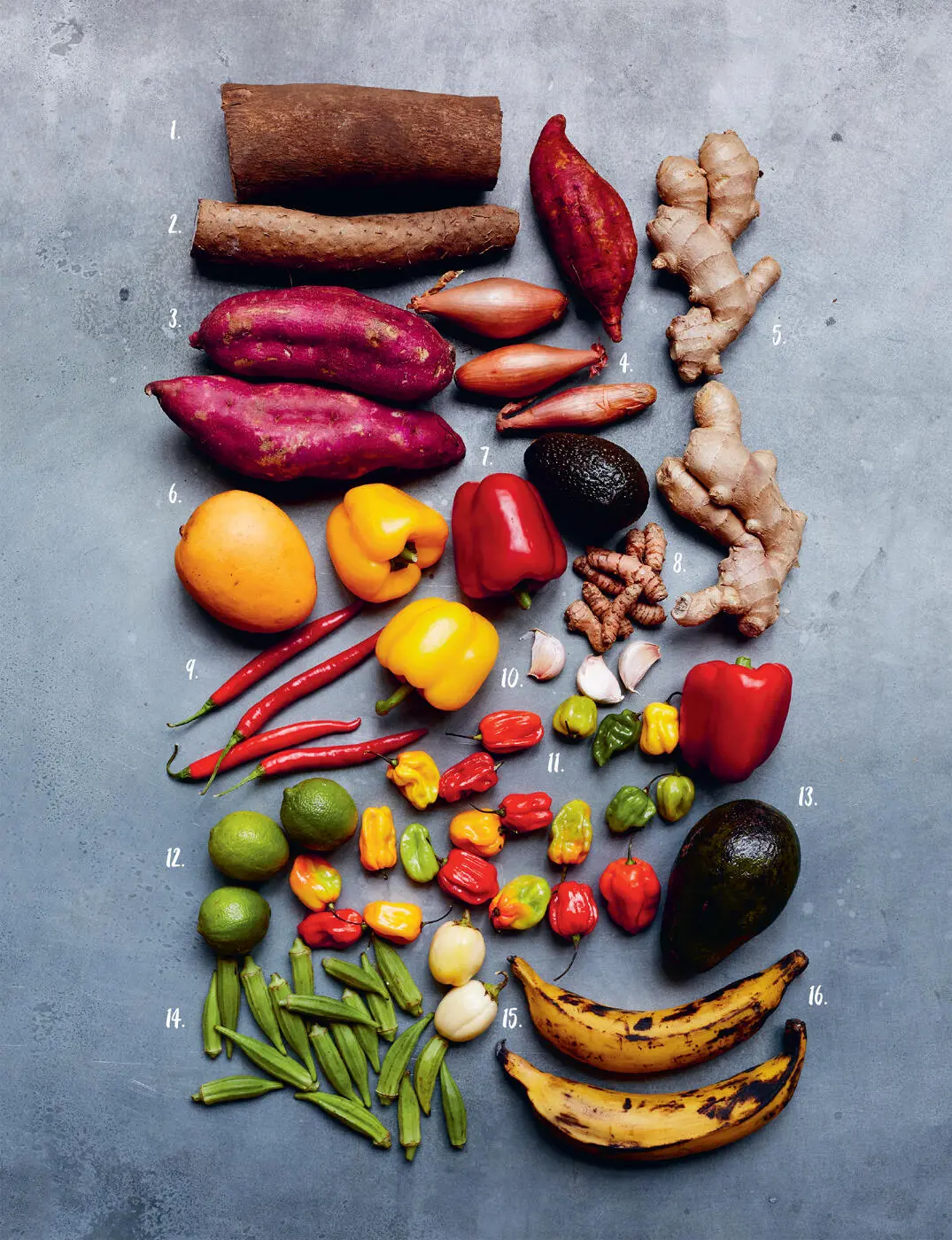
FRESH INGREDIENTS
1. YAMS
2. CASSAVA
3. SWEET POTATO
4. SHALLOT
5. GINGER
6. MANGO
7. PEPPERS
8. TURMERIC
9. LONG RED CHILLI
10. GARLIC
11. SCOTCH BONNET CHILLI
12. LIME
13. AVOCADO
14. OKRA
15. GARDEN EGGS
16. PLANTAINS
YAMSare tubers with an inedible dark brown bark and a white flesh that should be completely soft before being eaten. When cooked, yams are very similar in texture to Maris Piper potatoes, but with more natural sweetness. Typically, they’re eaten boiled but you can cook yams just as you would cook potatoes. They’re also dried out in the sun and processed to make a flour (labelled elubo isu in African grocery stores), which can be used for Okele or to make dumplings (Beef and Amala Stew Pot) and muffins (Amala Chocolate Muffins).
CASSAVAis a large tuber with brown bark and hard, white flesh. When cooked, it has a somewhat tangy, sourdough-like taste. Like most tubers, it can be eaten boiled, steamed, roasted or fried. It’s also milled into a flour that is typically used for making Okele, or processed to make garri.
SCOTCH BONNET CHILLIis an essential aromatic used in Nigeria, where many people like their food extremely spicy. It’s fine, however, to use regular long chillies if you’re not keen on extra-spicy food.
OKRA, also called lady fingers, are green pods with white seeds, generally no bigger than the size of a finger. They can be eaten raw and turn slimy when overcooked. Quite plain in taste, okra are great at absorbing flavours from herbs, spices and other vegetables.
GARDEN EGGSare not to be confused with eggplants (the American name for aubergines), although they belong to the same family and are similar in texture, albeit slightly softer. They’re round and white in colour (hence the name), and are best eaten cooked. I enjoy them roasted and eaten with other vegetables, such as in my Nigerian Roasted Veg.
PLANTAINSlook similar to bananas (they are a member of the same family), but are much larger and also have squarer ends. They’re also less sweet, which makes them incredibly versatile, and they can be used in sweet and savoury dishes.
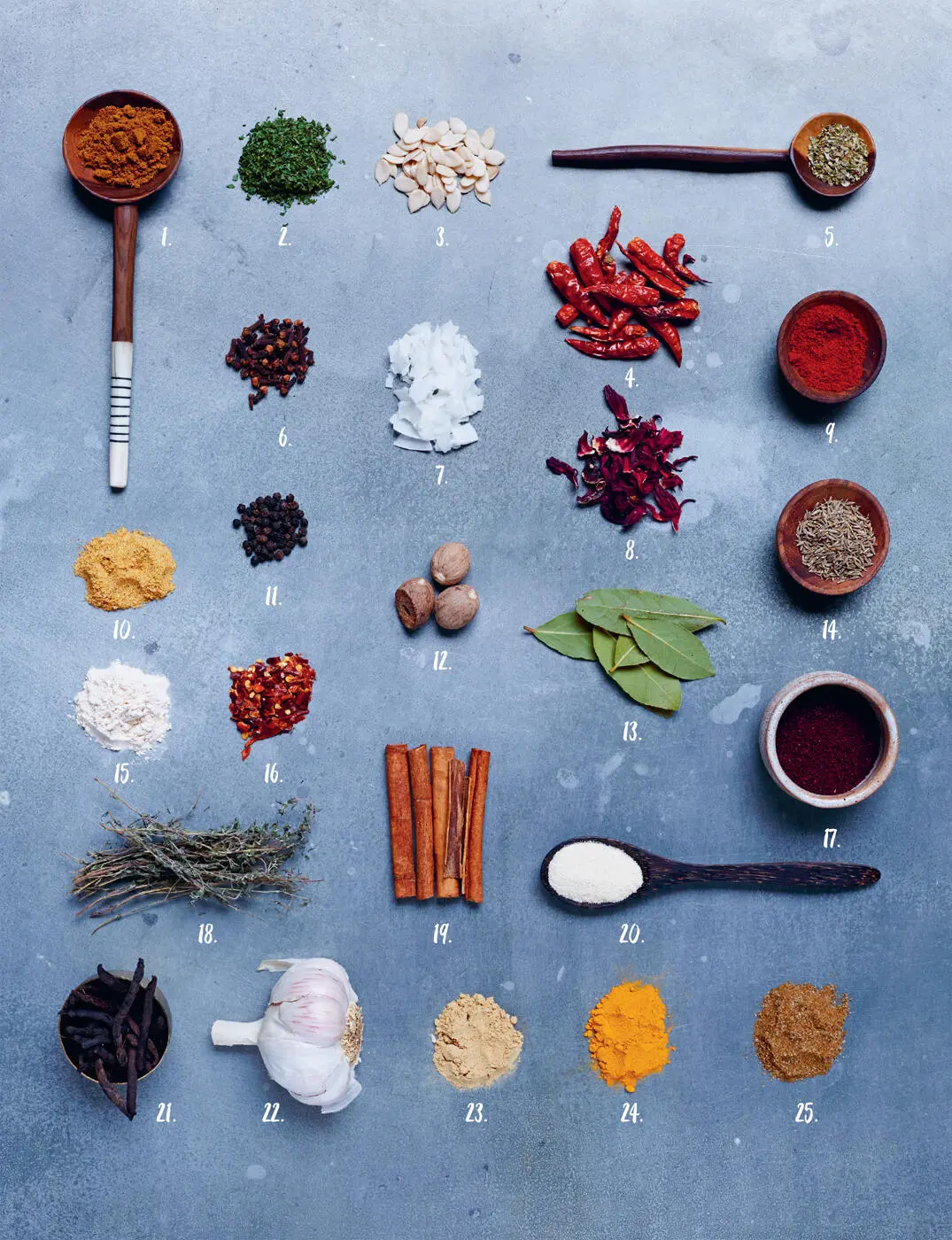
HERBS AND SPICES
1. CAYENNE PEPPER
2. EFIRIN
3. EGUSI SEEDS
4. DRIED BIRDSEYE CHILLIES
5. DRIED OREGANO
6. CLOVES
7. COCONUT FLAKES
8. HIBISCUS
9. PAPRIKA
10. BAOBAB
11. PEPPERCORNS
12. NUTMEG
13. DRIED BAY LEAVES
14. CUMIN SEEDS
15. CASSAVA FLOUR
16. CHILLI FLAKES
17. FINE-CUT DRIED HIBISCUS
18. DRIED THYME
19. CINNAMON
20. GARLIC GRANULES
21. UDA
22. GARLIC
23. GROUND GINGER
24. GROUND TURMERIC
25. CELERY SALT
CAROB
MORINGA
PALM JUICE, WINE AND VINEGAR
RED PALM OIL
KOLA NUTS
GARRI
BEAN FLOUR
ATAMA
CAYENNE PEPPERis used a lot in Nigerian cooking – usually dried whole peppers rather than its powdered form. Nigerian dishes are more likely to be seasoned with cayenne pepper than black pepper because of Nigerian fondness for spice.
Читать дальше
